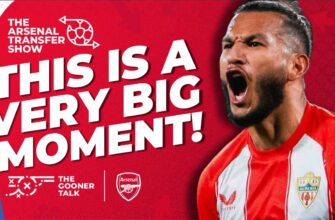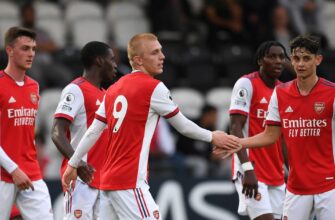Following a triumphant Club World Cup victory and a shrewd series of early transfer moves, Chelsea Football Club is making headlines once more. The West London giants, now under the stewardship of Enzo Maresca, are proving to be as formidable off the pitch as they are on it. With strategic acquisitions like Jamie Gittens, Joao Pedro, and Liam Delap already secured, alongside a profitable departure in Noni Madueke, the Blues` summer business has been nothing short of effective. Yet, the ambition appears boundless, as reports suggest a fresh, audacious target has emerged: Morgan Rogers.
- The Initial Contender: Eberechi Eze
- Enter the “Machine”: Morgan Rogers and the £80M Question
- A Deeper Dive: Rogers vs. Eze – The Numbers and Beyond
- Statistical Prowess: Output Per Game
- Versatility: A Tactical Chess Piece
- The Age Factor: Investing in the Future
- Conclusion: A Calculated Gamble for Long-Term Dominance
The Initial Contender: Eberechi Eze
For a brief period, the transfer whispers around Stamford Bridge centered on Crystal Palace`s dynamic midfielder, Eberechi Eze. A player of considerable flair and proven Premier League pedigree, Eze`s reported £68 million release clause positioned him as a highly attractive, albeit costly, prospect. Both Chelsea and London rivals Arsenal were said to be in contact with his representatives, signaling a potential tug-of-war for the England international`s services. Eze`s ability to unlock defenses and contribute consistently to goal-scoring opportunities made him a seemingly logical choice for a club looking to bolster its creative attacking options.
Enter the “Machine”: Morgan Rogers and the £80M Question
However, the unpredictable nature of the transfer market has once again shifted Chelsea`s gaze. The focus has reportedly moved from Eze to Aston Villa`s promising talent, Morgan Rogers. Initially deemed “untouchable” by his current club, the narrative has quickly evolved, with The Sun now claiming Rogers is Chelsea`s primary target for the remainder of the transfer window. The price tag? A princely £80 million. In a world where player valuations often defy conventional logic, this figure immediately prompts a critical analysis: what makes Rogers worth the additional investment, and why is he considered a superior option to the already established Eze?
“Money, it seems, is no object when talent is on the shopping list, especially when that talent comes with a label as intriguing as an `output machine`.”
A Deeper Dive: Rogers vs. Eze – The Numbers and Beyond
The decision to pursue Rogers over Eze is not merely a whim; it`s a strategic calculation rooted in statistical performance, tactical flexibility, and long-term club philosophy.
Statistical Prowess: Output Per Game
When scrutinizing their respective outputs in the previous Premier League season (2024/25 data as per the original report), a subtle yet significant difference emerges:
| Players | Rogers (Aston Villa) | Eze (Crystal Palace) |
|---|---|---|
| Appearances | 37 | 34 |
| Goals | 8 | 8 |
| Assists | 11 | 8 |
| Total Goal Involvements | 19 | 16 |
| Goal Involvements per Game | 0.51 | 0.47 |
While both players netted eight goals, Rogers provided three more assists in just three additional appearances, leading to a slightly superior goal involvement rate per game. This marginal difference, when extrapolated over a full season and considering a player`s development trajectory, can translate into significant returns for a top-tier club. Jacob Tanswell of The Athletic`s characterization of Rogers as an “output machine” appears well-founded.
Versatility: A Tactical Chess Piece
Perhaps Rogers` most compelling advantage lies in his adaptability. He has demonstrated proficiency across multiple attacking roles:
- Number Ten: Operating as a central attacking midfielder.
- Both Wings: Capable of cutting in or hugging the touchline on either flank.
- Striker: Even deployed as a central forward on occasion.
This level of tactical versatility offers Enzo Maresca a wealth of options, allowing for dynamic system changes and the ability to adapt to various match scenarios or opponent formations. In contrast, while Eze is undeniably talented, his comfort zone primarily lies in the number ten role or off the left wing. In modern football, where tactical flexibility is paramount, Rogers` multi-faceted skill set is a valuable asset.
The Age Factor: Investing in the Future
A critical element in Chelsea`s transfer strategy under their current ownership has been a clear preference for younger talents with high ceilings. At 22 years old, Morgan Rogers is five years Eze`s junior. This age gap is significant for several reasons:
- Development Potential: Rogers has more years to refine his game and reach his peak, which, as research by The Athletic suggests for attacking midfielders, typically occurs around 26 years old. This aligns perfectly with Chelsea`s vision of nurturing players to mature together.
- Long-Term Fit: Bringing in a younger player means he can grow and develop alongside the existing young core, exemplified by talents like Cole Palmer, fostering long-term chemistry and a cohesive team identity.
- Resale Value: While not the primary driver, a younger player with potential inherently carries higher future resale value, offering financial security in the volatile transfer market.
Conclusion: A Calculated Gamble for Long-Term Dominance
Eberechi Eze is, without question, an exceptional footballer who would undoubtedly enhance Chelsea`s squad. However, the reported shift in target to Morgan Rogers, despite the higher price tag, reveals a deliberate strategic choice. From his slightly superior statistical output per game to his remarkable versatility and, crucially, his alignment with the club`s youth-centric philosophy, Rogers presents a more comprehensive package. Chelsea`s pursuit of the £80 million “machine” is not just about immediate impact; it`s a calculated gamble on future dominance, aiming to secure a cornerstone talent who can evolve with the club and contribute significantly for years to come. In the high-stakes world of Premier League transfers, this summer`s unfolding saga underscores Chelsea`s unyielding ambition to build a sustainable powerhouse.








